How BLUE BLUE Japan Introduces Indigo to a New Generation
Blue Blue Japan│photo by Shun Komiyama
Indigo dyeing is a craft deeply rooted in Japanese daily life. Also known as aizome, the process of extracting dye from plants and transforming fabric into rich blue tones has always required significant time and labor. Tokyo-based brand BLUE BLUE JAPAN’s pure indigo dye method uses sukumo, fermented indigo leaves, and involves a cycle of planting, harvesting, drying, fermenting, and reducing the leaves into the dye.
These techniques hold meaning far beyond simply adding color to cloth. The idea that fabrics gain character as they age, developing their own “flavor”, is central to the Japanese attitude toward wear. From farmers’ workwear to fishermen’s garments, everyday clothing, and even samurai formal attire, indigo has long served a role where durability, function, and beauty meet.
Indigo is also a color that evokes stillness and depth. A blue that appears from the shadows. A blue that fades gently with washing. A blue that changes its expression when met with light. This “blue that carries time” is more than decoration, it reflects a Japanese sensibility that values long use and the beauty of aging materials.
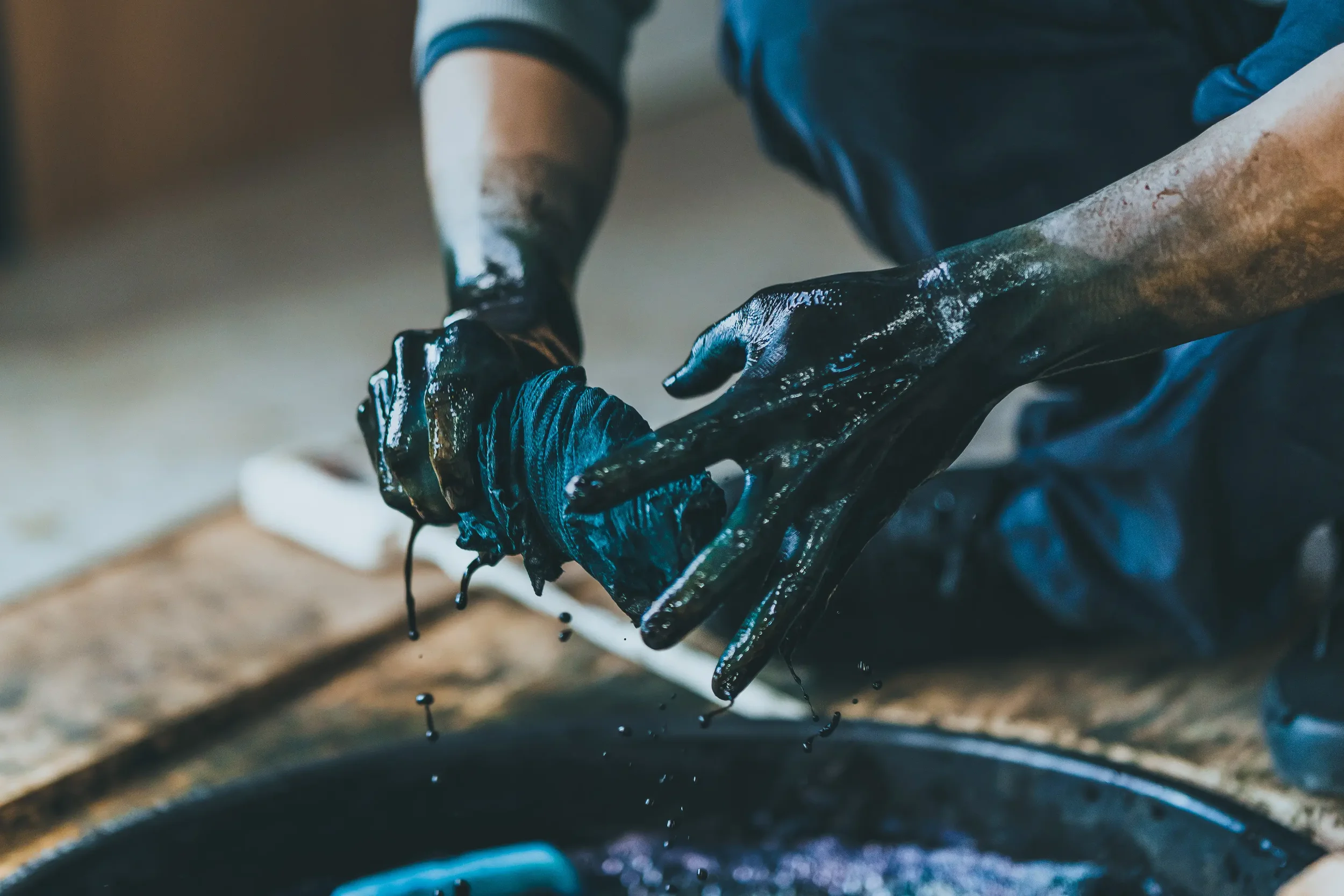
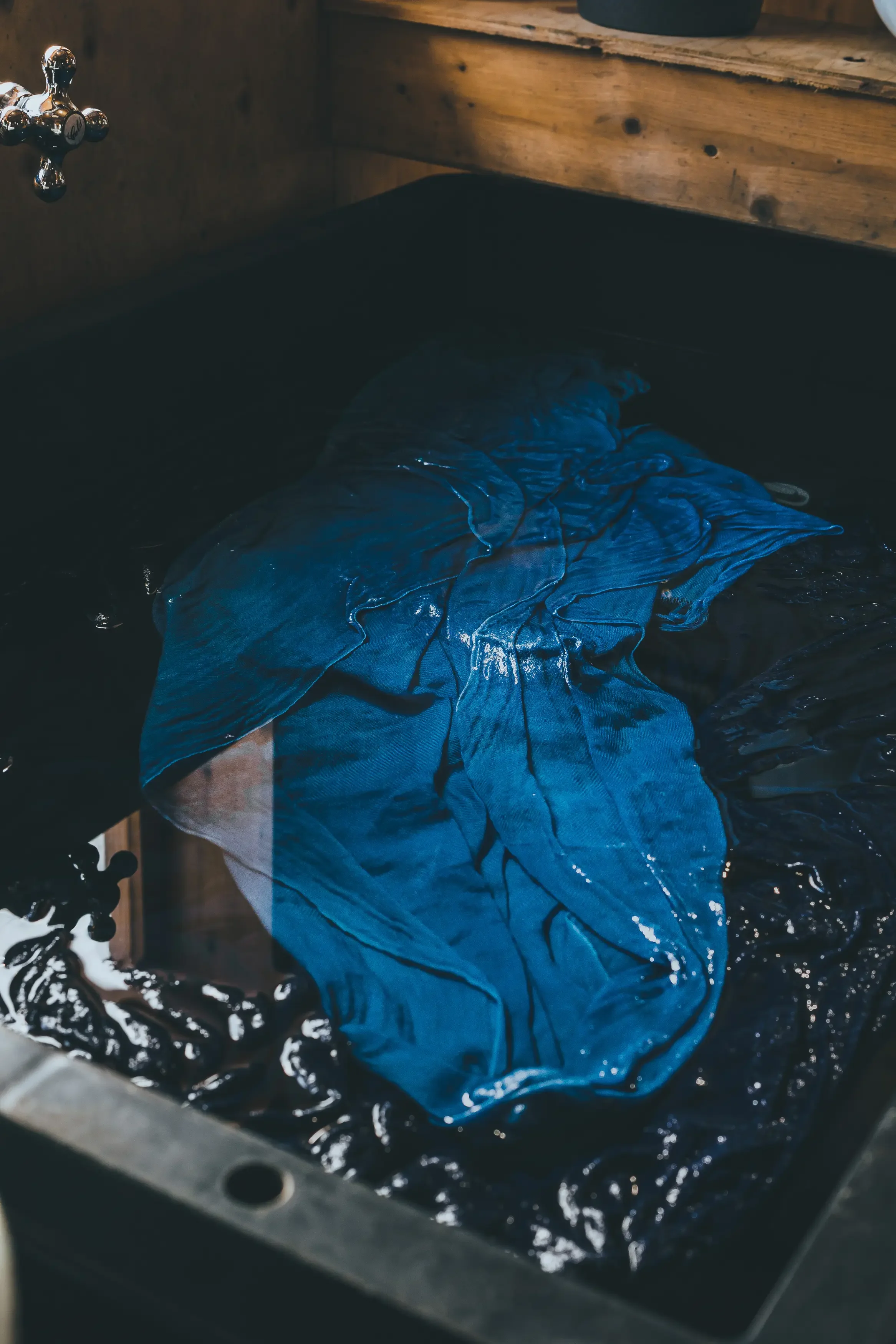

BLUE BLUE JAPAN’s Approach to Indigo
Established in 1996 (under Seilin & Co.), BLUE BLUE JAPAN has valued three core elements since its beginning: handcraft, indigo dyeing, and creating garments that feel warm and comfortable to wear.
At the foundation of it all is a dedication to ‘MADE IN JAPAN’, a commitment to Japan’s traditional craftsmanship techniques, and a strong resolve to preserve the labor-intensive craft of pure indigo dyeing.
With true indigo dyeing, impurities naturally fall away as the fabric is worn, allowing the color to deepen into a rich and beautiful shade of blue. Indigo has long been said to have antibacterial, insect-repellent, and UV-protective properties, and compared to chemical indigo dyeing, it is also known for transferring less color.
“We are committed to the blues found in traditional workwear, the natural indigo and classic indigo shades that have captivated us for years, and to the unique hues that emerge only with time. Grounded in Japan’s traditional methods of hand-dyeing with natural indigo and hand-dyeing with indigo, we also incorporate dyes that resonate with these tones as we pursue a blue that is distinctively BLUE BLUE JAPAN.”
Their philosophy is to create everyday clothing inspired by daily life, basic items meant to be cherished for a long time. In other words, they do not treat indigo dyeing as a nostalgic relic, but as a living color that continues to exist within today’s lifestyle.
At the foundation of this philosophy stands their flagship store, OKURA, which predates the brand itself.
Blue Blue Japan│photo by Shun Komiyama
OKURA, quietly standing along a small alley in Daikanyama, opened in 1993. Designed to evoke Japan’s traditional storehouses, the shop was built entirely by the staff, using driftwood washed ashore, discarded metal scraps, and empty cans found in the city, encapsulating the theme of “rural nature within the urban landscape.”
Within this handmade space, colors and materials that reflect traditional culture and Japan’s rich four seasons come together through indigo, creating a world where these elements intersect.
Inside the store, you’ll find not only indigo-dyed shirts, denim, and sashiko coats, but also selected goods sourced from overseas, embodying the natural coexistence of long-cultivated craftsmanship and modern design.
The displays feel like a museum of indigo, as fabrics shift with light, the faint scent of dye in the air, letting visitors physically experience Japan’s blue.
From this space, BLUE BLUE JAPAN’s philosophy took shape.
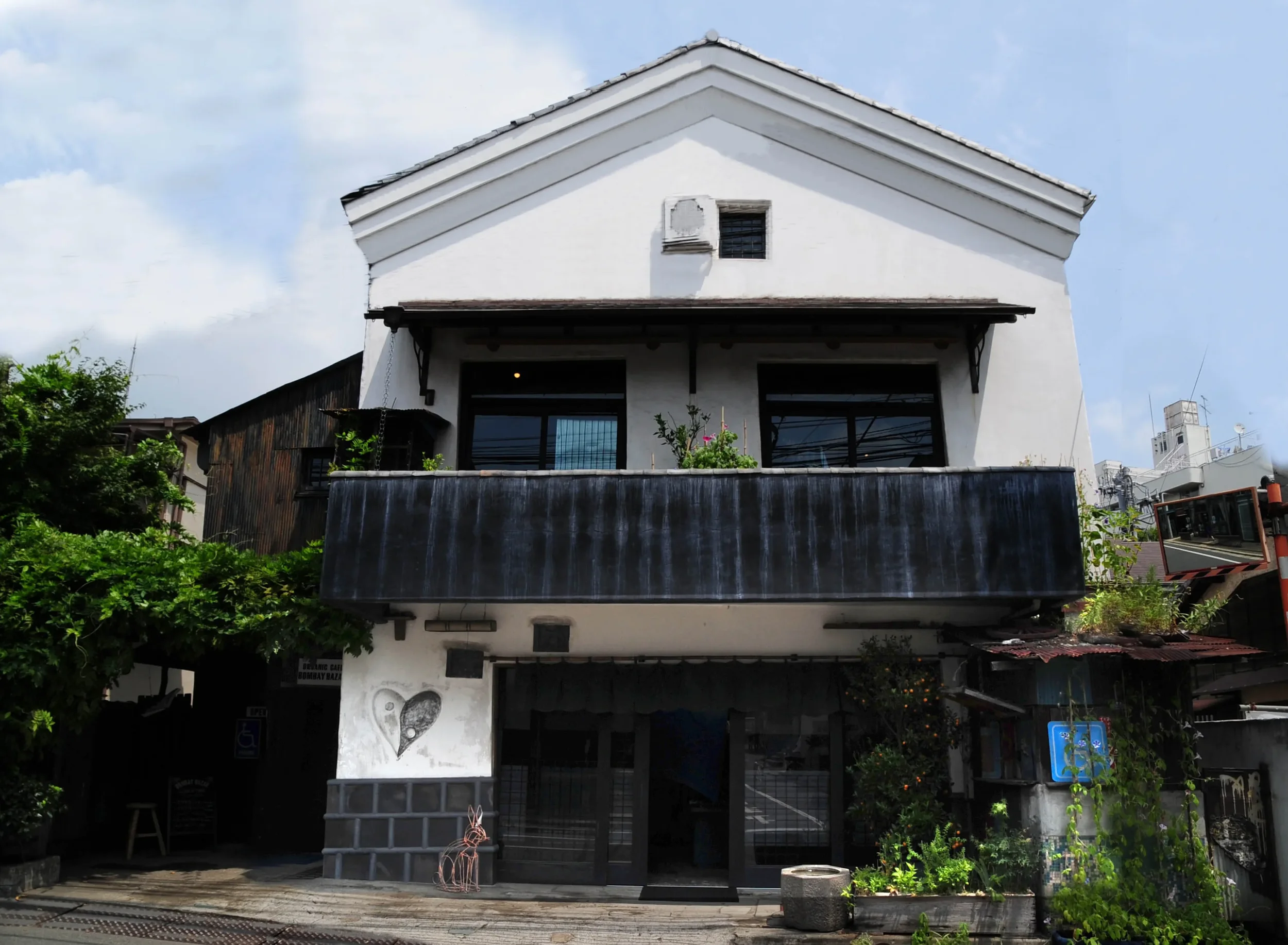
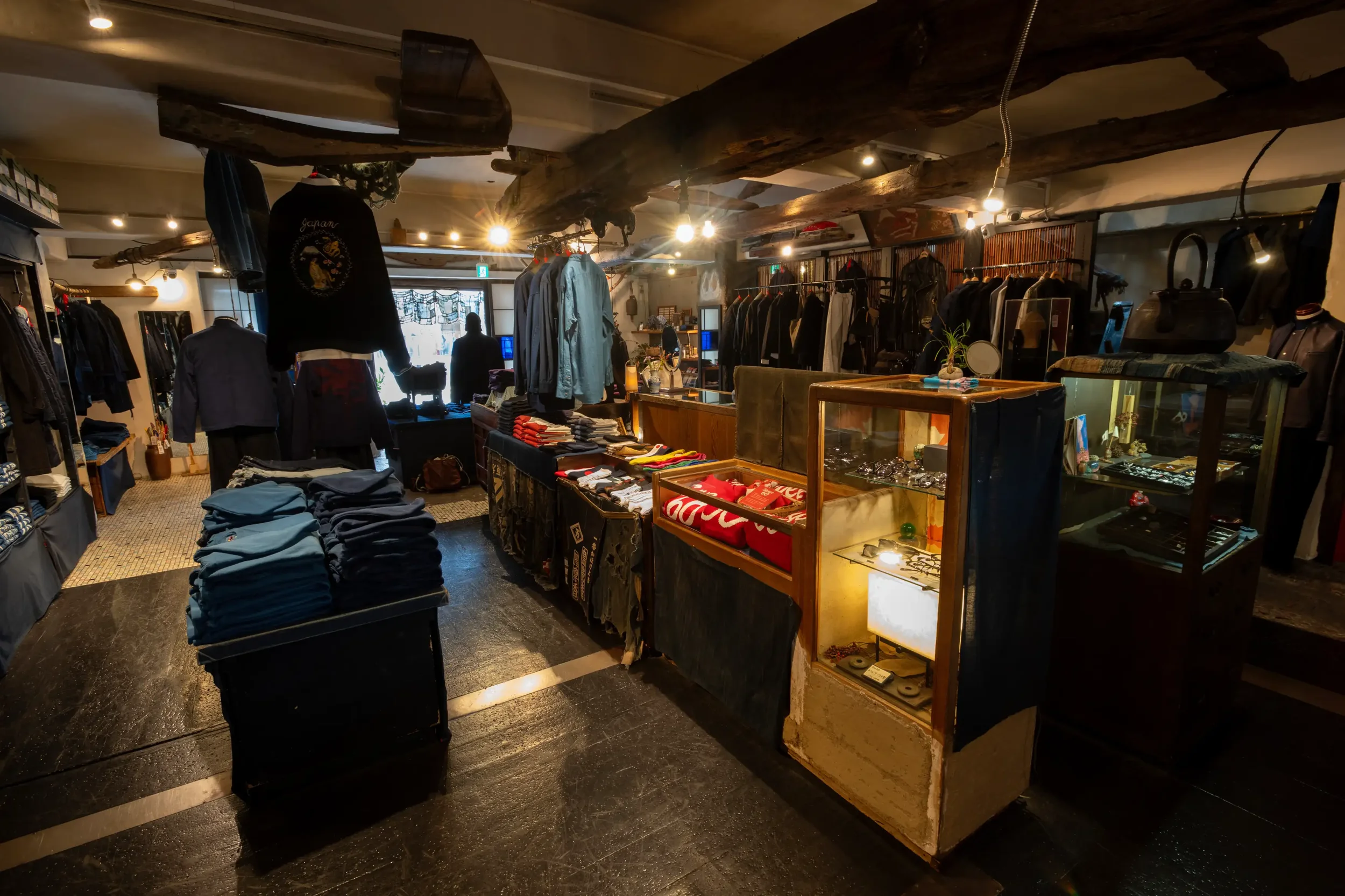
The Dynamic Between Motion and Stillness - A Japanese Aesthetic
Daikanyama’s narrow streets and lived-in textures became the setting for our exploration of indigo’s character. With Hikaru and Yuki, we captured how the fabric behaves in the real world. How it shifts with a sudden breeze or movements, and how it settles into stillness when the body pauses. Through movement and quiet presence, indigo revealed both its strength and its softness without us needing to ask.
Hikaru and Yuki became opposite elements. Hikaru leaping, turning, creating flowing lines between light and shadow. The movement in the fabric, the irregularity of the dye, and the shifting gradients all convey the power of indigo in motion.
Yuki Standing with calm presence, highlighting texture, stitches, the depth of color. The drape and weight of the cloth express the stillness of indigo through posture alone.
This contrast of motion and stillness reflects a distinctly Japanese appreciation of ma (space), margin, and balance. Just as indigo cloth evolves slowly with time, both movement and quietness carry traces of experience and change. By translating these characteristics visually, we hope to invite you to consider what indigo is, and why its significance remains today.



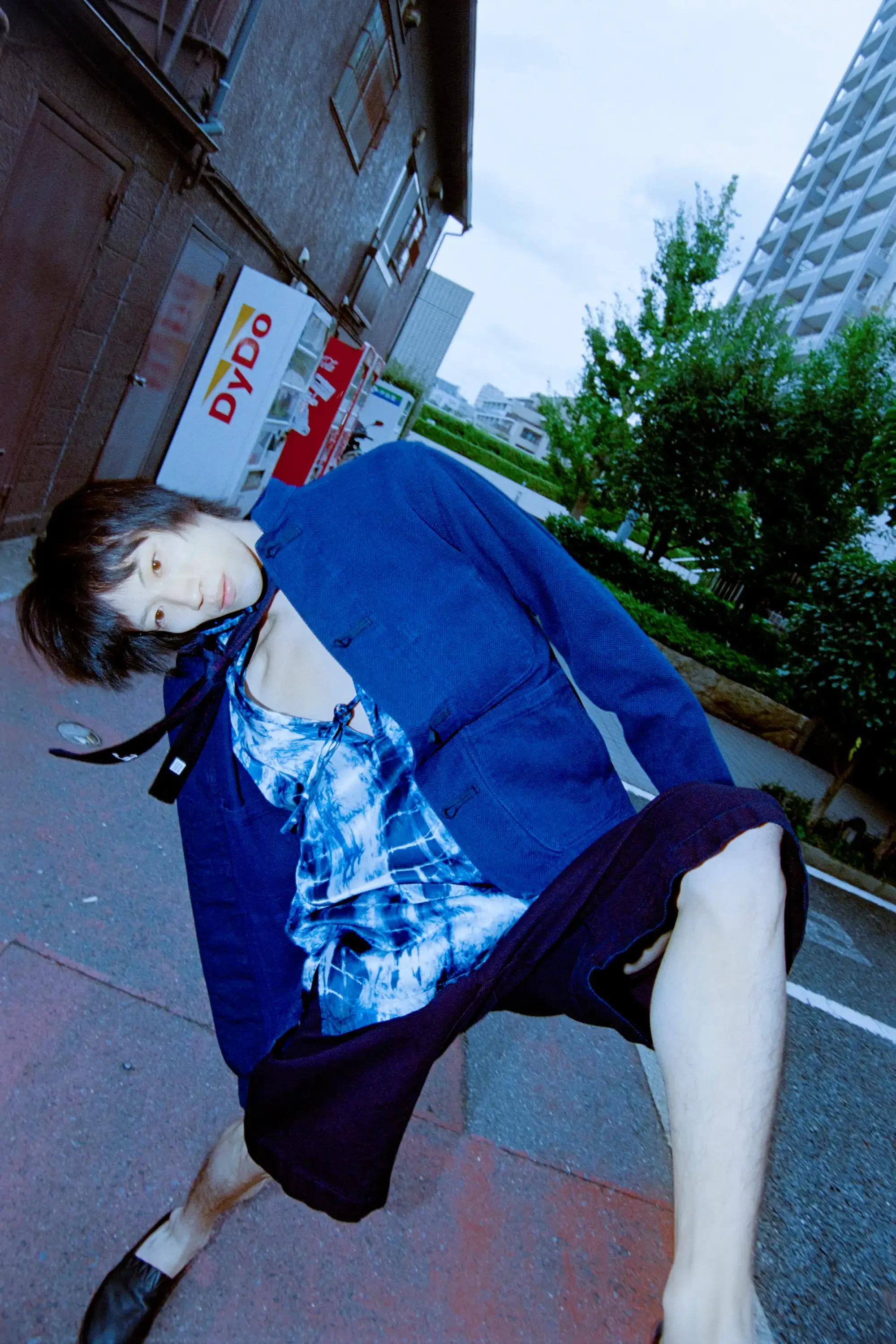
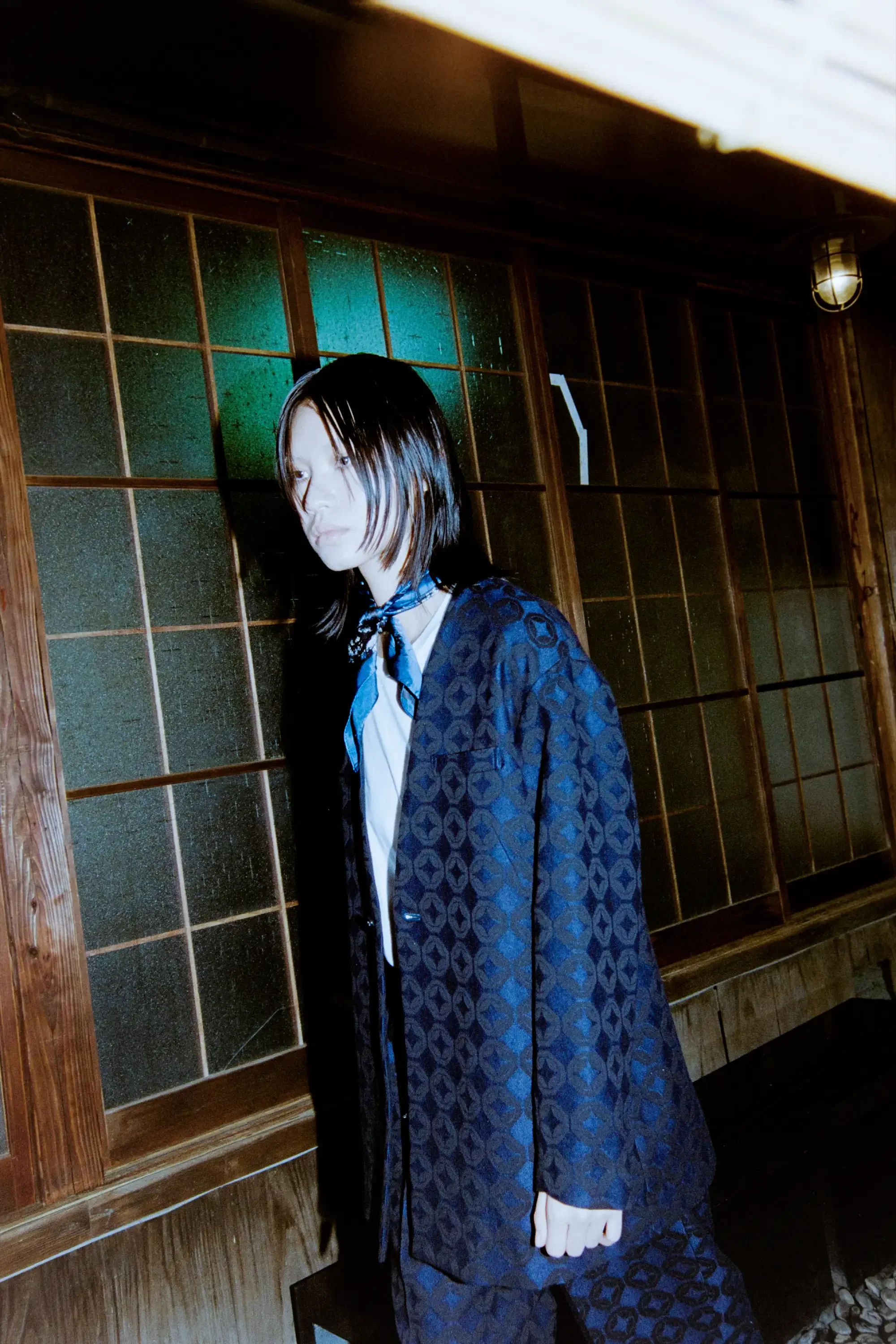
Indigo is a living material, changing with time, responding to the lives of its wearers. If BLUE BLUE JAPAN plays a role in weaving this traditional craft into the present and passing it on to the next generation, then this editorial serves as one way to make its value visible.
The contrast between Hikaru and Yuki reveals indigo’s dual nature: strength and stillness. Indigo will continue to live alongside craftsmanship, ways of life, and individual aesthetics. And in that, choosing to wear indigo might just change the way you see the world, even if only a little.

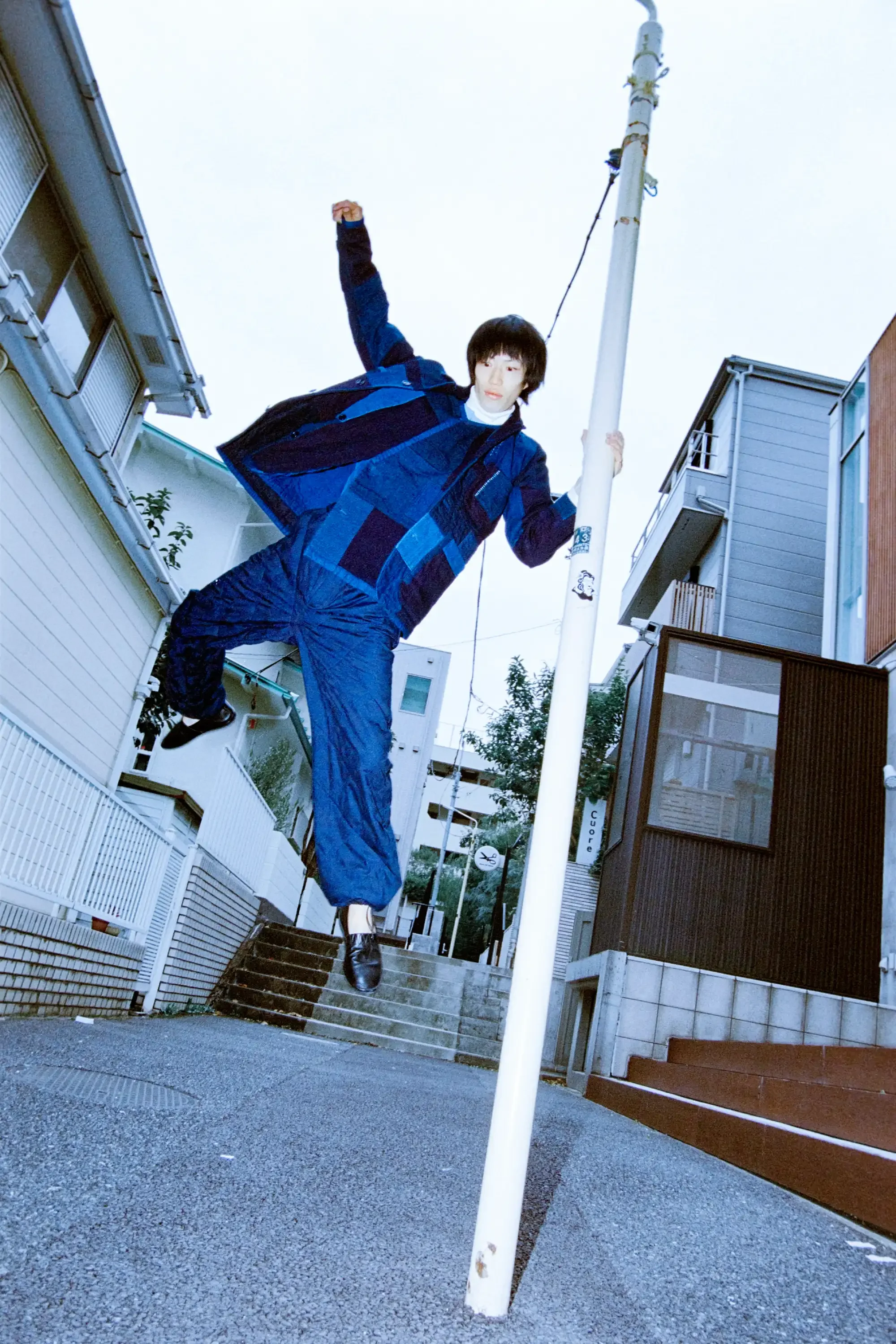





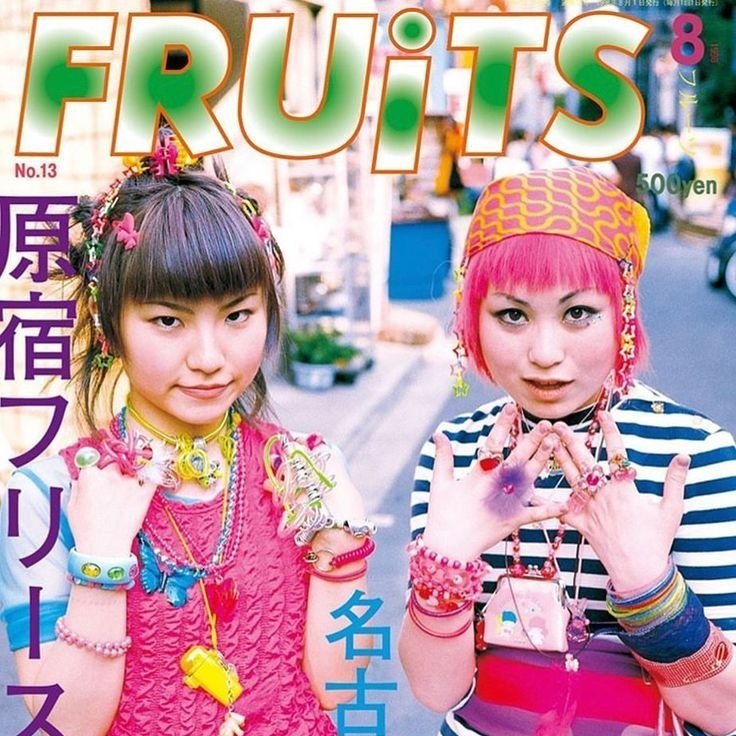
Explaining the glue between anime, fine art, toys, and fashion.